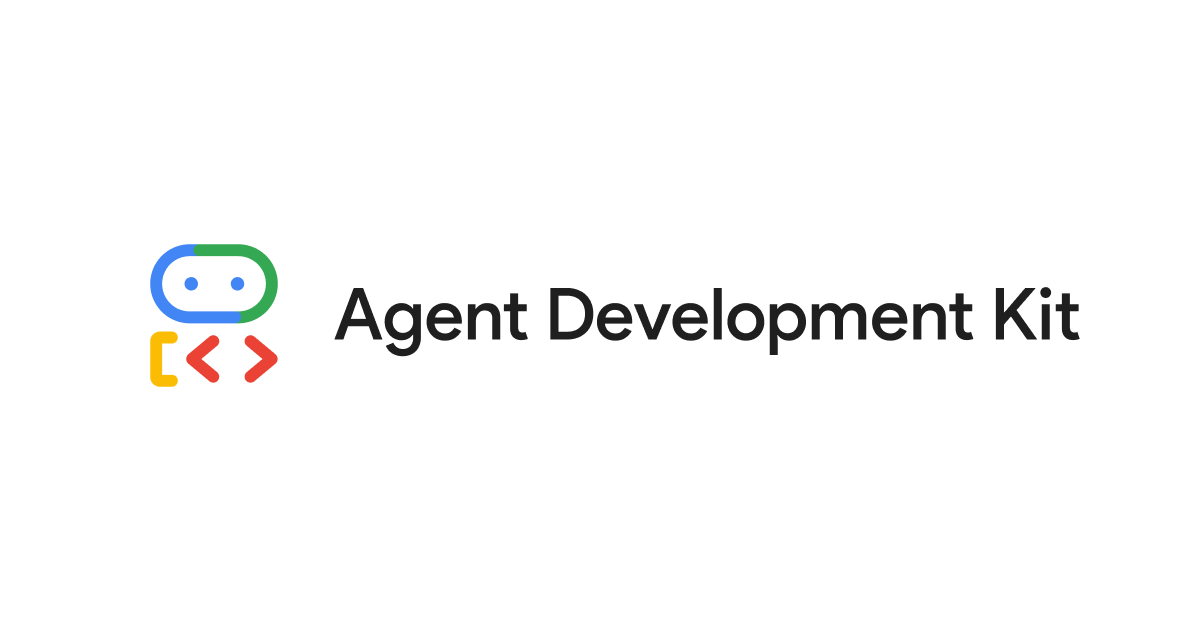
Estimated reading time: 7 minutes
Key Takeaways
- Google Agent Development Kit (ADK) empowers developers to build modular, scalable, and secure AI agents for cloud and local environments.
- ADK enables flexible orchestration of multi-agent systems and supports a rich ecosystem of tools, APIs, and frameworks.
- Production-ready integrations and robust documentation make rapid development and deployment accessible for businesses and researchers alike.
- ADK’s open-source nature ensures compatibility with industry-leading platforms, driving innovation and agentic automation in 2025.
Table of Contents
- Introduction: The Era of Agentic AI Is Here
- What Is Google Agent Development Kit (ADK)?
- Why ADK Is a Game Changer
- Core Concepts & Architecture
- The Developer Lifecycle: From Idea to Production
- Getting Started With Google ADK
- How Does ADK Compare to Other Frameworks?
- What Can You Build With ADK? Top Use Cases
- Fueling the AI Boom: ADK’s Role in 2025
- Spotlight: Agents In Google Workspace
- Getting Your Hands on ADK
- The Future: Smarter Agents, Smarter Work
- Closing Thoughts: Join the Agentic AI Revolution
- FAQ
Introduction: The Era of Agentic AI Is Here
The arrival of the Google Agent Development Kit (ADK) ushers in a new age for AI, where autonomous agents work collaboratively to solve broad real-world challenges. This open-source framework democratizes agentic AI, allowing developers, businesses, and researchers to quickly build and optimize intelligent solutions that were previously reserved for the largest enterprises.
Agents are moving from background tasks to core actors: from insurance bots and research partners to context-aware chatbots that both respond and act autonomously. ADK unlocks this shift with an accessible, cloud-native toolkit.
For wider perspectives on industry transformation through agentic automation, visit Relevance AI’s workforce automation.
What Is Google Agent Development Kit (ADK)?
ADK is an open-source, modular toolkit for Python and Java. It equips developers to design, deploy, and manage AI agents: autonomous programs capable of searching the web, executing code, handling API calls, managing documents, and even creating sub-agents on demand. The open architecture means you can customize agents by adding new modules or integrating external tools—all with production scalability in mind.
Source: Google Agent Development Kit Release Notes
Why ADK Is a Game Changer
- Flexibility & Model-Agnostic Design: Works with Google Gemini, Vertex AI, and frameworks like LangChain and CrewAI.
- Cloud & Local Ready: Deploy agents locally, containerize with Docker, or scale on Vertex AI and Cloud Run.
- Production-Grade Security: Tools and best practices for secure, observable agentic systems.
- Community & Documentation: Comprehensive documentation, tutorials, and sample agents make onboarding seamless.
See more on latest industry tech trends shaping AI.
Core Concepts & Architecture
Model-Agnostic
Use ADK with Gemini, Vertex AI, LangChain, CrewAI—combine strengths across open and proprietary models.
Explore developer tools for agent workflows: Best AI coding editors.
Flexible Orchestration
- Custom workflows: sequential, parallel, looped.
- Dynamic routing: agents adapt and reroute tasks using LLMs.
Multi-Agent Systems
Build teams of collaborative agents, each with unique roles that negotiate, delegate, and deliver solutions.
- Information gatherer (web search)
- Analyst (summary & synthesis)
- Communicator (client reporting)
Unlock more with no-code/low-code automation.
Rich Tool Ecosystem
- Pre-built tools: web search, code execution, calculator, and more.
- Plug in external APIs or even other agents for unlimited extensibility.
Source: AI in the Workplace Report 2025
For innovations in workflow automation: n8n’s pricing update and n8n API magic.
Deployment Flexibility
- Develop locally or on cloud.
- Containerize with Docker.
- Scale in Vertex AI or custom clouds.
Evaluation & Observability
Integrated tracing and evaluation via W&B Weave helps debug and optimize agent reasoning and workflows.
Practical monitoring advice: Optimize your token usage.
Safety & Security
Sandboxing, encrypted communications, and easy audit capabilities—critical for production-grade agentic AI.
Website protection tips: Web security checklist.
The Developer Lifecycle: From Idea to Production
- Agent Definition: Agents are Python or Java classes defining goals and logic.
- Tool Integration: Attach APIs, code, libraries, or external tools.
- State & Memory: Persistent memory enables agents to reason and track learning/context.
- Orchestration: Orchestrators coordinate agents for optimal sequencing and collaboration.
More possibilities with workflow automation tools: n8n workflow reports.
Getting Started With Google ADK
Google provides rich documentation, quickstarts, and tutorials—plus open sample agents you can learn from. Tracing tools help you visualize reasoning and debug workflows easily.
Source: Latest AI Breakthroughs, Crescendo AI
Want to level up your web experiences? Discover strategies at Building high-impact personal websites in 2025.
How Does ADK Compare to Other Frameworks?
| Feature | Google ADK | LangChain | AutoGen |
|---|---|---|---|
| Multi-agent support | Yes | Partial | Yes |
| Model-agnostic | Yes | Yes | Yes |
| Google Cloud integration | Native | External possible | External possible |
| Open-source | Yes | Yes | Yes |
| Security/Observability | Built-in | Varies | Limited |
| Tool ecosystem | Rich, extensible | Extensive | Extensible |
For expert advice on boosting creativity and web security, see website security tips and creativity tips.
What Can You Build With ADK? Top Use Cases
- Advanced Chatbots – capable of browsing, computing, and maintaining rich context.
- Collaborative Research Teams – multidisciplinary agent networks for science and analysis.
- Business Process Automation – insurance AI, engagement agents, and productivity boosters.
- Complex Workflow Orchestration – coordinate multi-agent solutions across enterprise and research domains.
See automation innovations with Relevance AI.
Fueling the AI Boom: ADK’s Role in 2025
According to Stanford’s 2025 AI Index, 78% of businesses use AI in production, up sharply from last year. Agentic systems and tool-based LLMs drew $33.9B in investment—evidence of agent frameworks moving from novelty to necessity.
Spotlight: Agents In Google Workspace
ADK powers both Agentspace and new Gemini experiences in Google Workspace: see Gmail autonomously sorting and responding, Docs assembling reports via agent teamwork. This future is now, driven by agent orchestration behind the scenes.
For more on low-code/no-code orchestration, explore n8n automation.
Getting Your Hands on ADK
- Stable Python release landed May 20, 2025; Java support rapidly evolving.
- Announced at Google Cloud NEXT 2025, backed by Google DeepMind.
- Open-source, clear tutorials, and active community support.
- Build and deploy locally, in containers, or on the cloud.
The Future: Smarter Agents, Smarter Work
- Standardized agent development for all skill levels
- Flexible workflows—modular, collaborative, scalable
- Optimized for local, cloud, and hybrid deployment
- Comprehensive documentation for constant innovation
From custom chatbots to enterprise orchestration, ADK is catalyzing a new era of adaptive, secure, agent-driven solutions.
Closing Thoughts: Join the Agentic AI Revolution
The agentic age has arrived. Google Agent Development Kit is the framework that lets developers, businesses, and researchers turn AI vision into reality—combining open-source flexibility, robust security, and modular design.
Whether you’re eager to explore, automate, or collaborate: start building with ADK—shape tomorrow’s intelligent teamwork today.
FAQ
- What is an agentic AI system?
Agentic AI refers to autonomous programs (agents) that can initiate actions, collaborate, reason, and solve tasks without direct step-by-step human control. They typically combine language model reasoning with tool usage, state tracking, and orchestration. - Is Google ADK open-source?
Yes. Google Agent Development Kit is fully open-source, with flexible modularity for integration. - Can I use ADK with non-Google tools?
ADK is model-agnostic and supports integration with popular frameworks and models beyond Google’s ecosystem, including LangChain, CrewAI, and more. - Does ADK provide agent tracing and debugging?
Yes. It offers deep observability via tools like W&B Weave—track agent reasoning, workflow steps, and more. - Where can I learn more about ADK and see it in action?
Google’s official documentation includes tutorials, quickstarts, and sample agents. For trending use cases, check out tech news and automation reports from trusted industry sources like Stanford AI Index and Crescendo AI.


